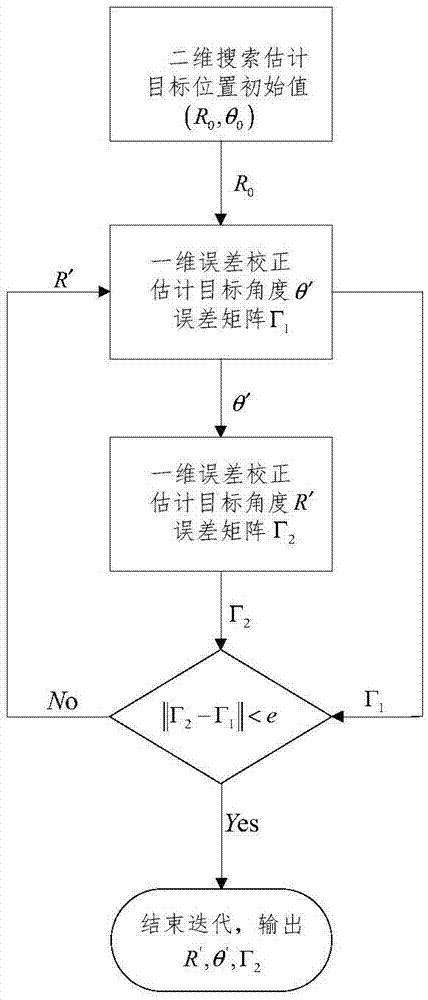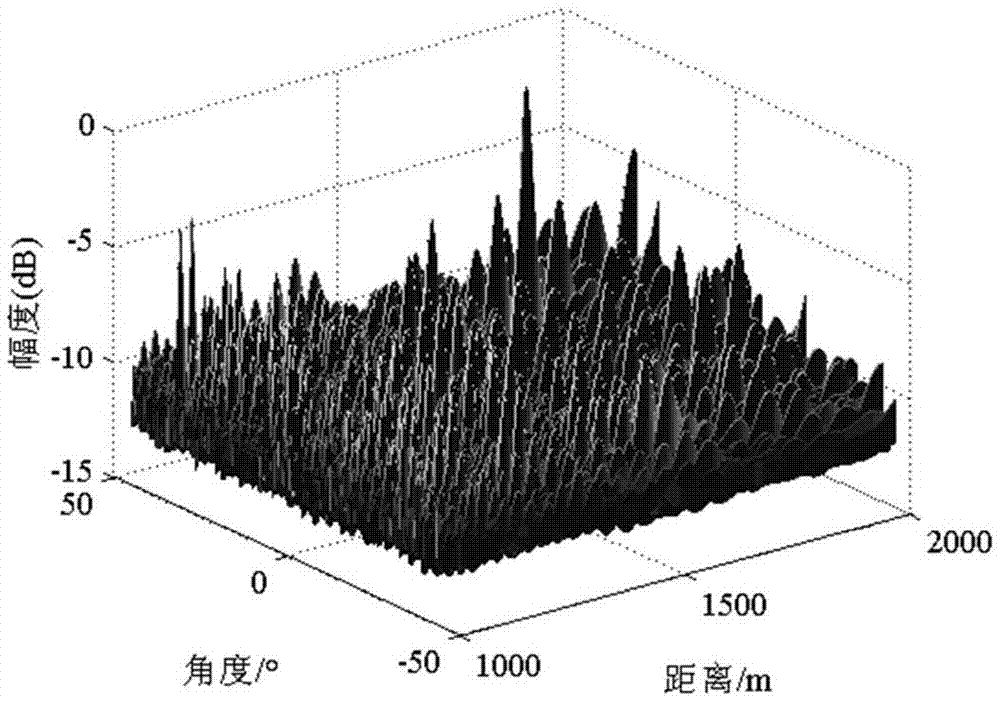Thinned array near-field passive location amplitude and phase error correction method
A technology of amplitude and phase error and passive positioning, which is applied in the field of phased array radar and can solve problems such as multi-channel amplitude and phase error
- Summary
- Abstract
- Description
- Claims
- Application Information
AI Technical Summary
Problems solved by technology
Method used
Image
Examples
Embodiment Construction
[0036] The present invention will be further described below in conjunction with the drawings.
[0037] Step 1: Randomly arrange M antennas within the range of [0, D] meters on the x-axis in the Cartesian coordinate system to form a sparse array. The position is generated as follows: 1 is arranged at position 0 and position D. Array elements and their positions are set to d 1 With d M , Namely d 1 = 0, d M =D, fixed array aperture. Then randomly generate M-2 numbers in a uniform distribution in the range of (0, D), and sort them from small to large, and arrange the remaining M-2 array elements at the positions represented by the M-2 random numbers. , And suppose the positions of the array elements are respectively d 2 ,...,D m ,..., d M-1 .
[0038] Step 2: Start with d 1 The array element at the position is the reference array element. Considering that P near-field uncorrelated target signal sources are incident on the array generated in step 1, for any p = 1, 2, ..., P, use (r p...
PUM
 Login to View More
Login to View More Abstract
Description
Claims
Application Information
 Login to View More
Login to View More - R&D
- Intellectual Property
- Life Sciences
- Materials
- Tech Scout
- Unparalleled Data Quality
- Higher Quality Content
- 60% Fewer Hallucinations
Browse by: Latest US Patents, China's latest patents, Technical Efficacy Thesaurus, Application Domain, Technology Topic, Popular Technical Reports.
© 2025 PatSnap. All rights reserved.Legal|Privacy policy|Modern Slavery Act Transparency Statement|Sitemap|About US| Contact US: help@patsnap.com



